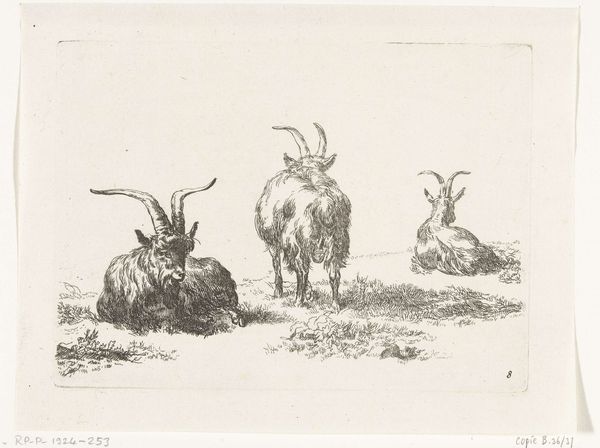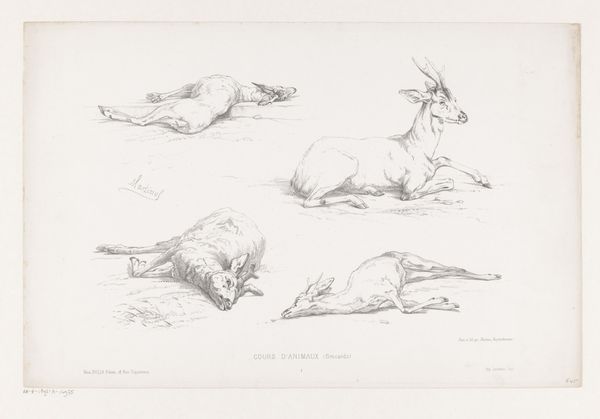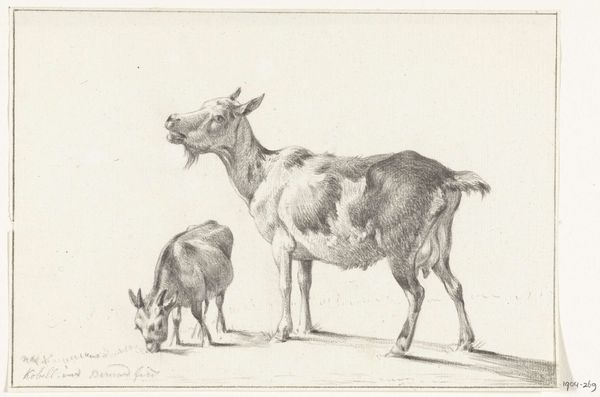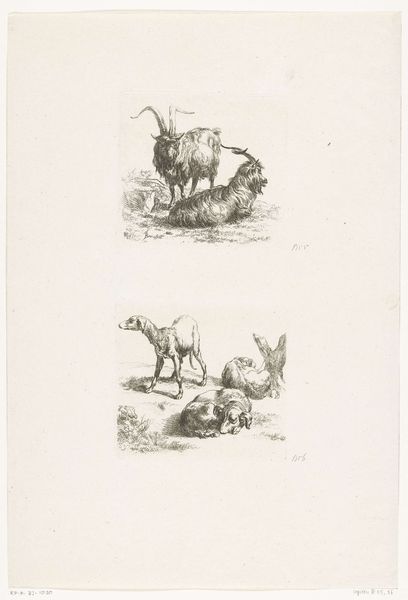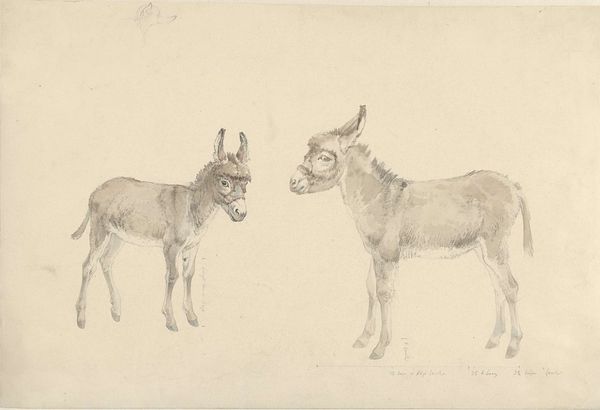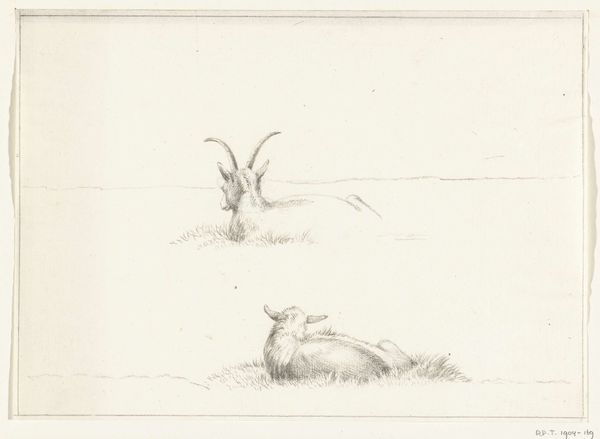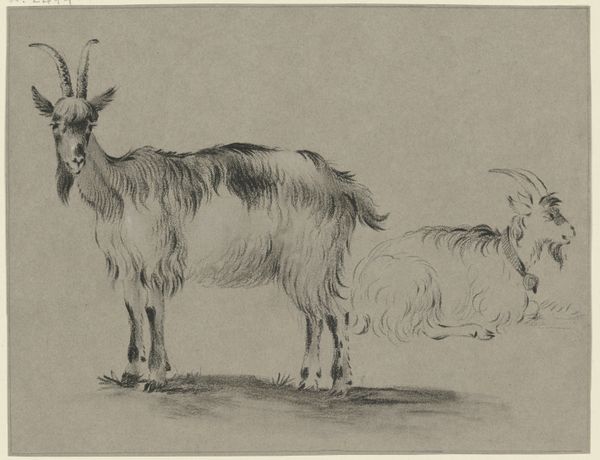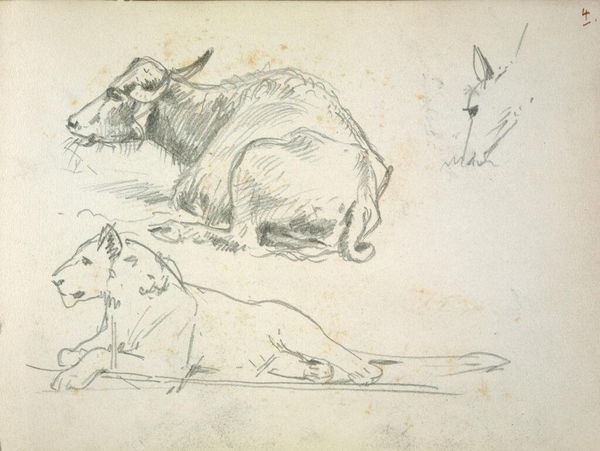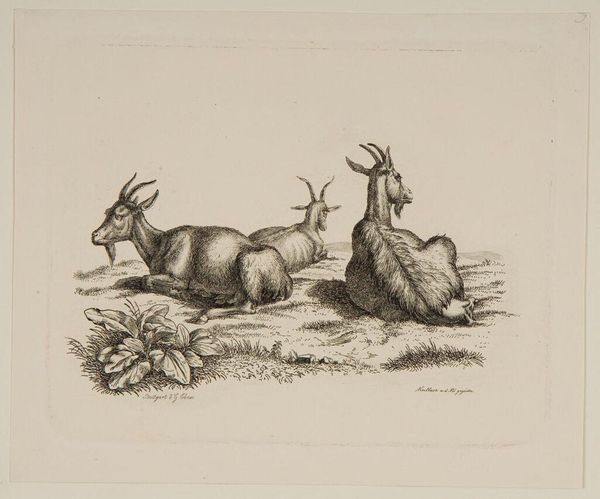
Dimensions: height 335 mm, width 465 mm
Copyright: Rijks Museum: Open Domain
Editor: This drawing, "Two Bucks and a Goat," from somewhere between 1820 and 1895, by Gijsbertus Craeyvanger, feels very calm, very... pastoral. It’s interesting how he's captured the texture of the goat's fur with just pencil. What stands out to you when you look at this piece? Curator: You know, what whispers to me are those soft gradations of tone. It's like Craeyvanger's not just showing us goats, but he's trying to capture their essence, their quiet presence. Do you get that sense of stillness, too? Editor: I do, definitely. There's a sort of gentle observation. Like a snapshot, almost? Curator: More than a snapshot, I think! Snapshots capture a moment, but this feels like a lingering gaze. Consider the Romantic era. Artists sought the sublime in nature, that overwhelming sense of awe. Now, goats aren't exactly mountains, but perhaps he found his own little sublime in the simple honesty of these creatures? Almost a return to nature and innocence...a goat eden. Editor: So, maybe it's less about the goats themselves and more about what they represent? A simpler life, maybe? Curator: Precisely! And even today, the image's apparent realism gives it authenticity. You feel it viscerally, almost like you could reach out and touch their fuzzy coats. Which makes you think, doesn’t it, about our own relationship with the natural world. Editor: Absolutely! I hadn't really thought about it that way before. Curator: That's the beauty of art, isn't it? A simple drawing of some goats can spark a whole flock of thoughts. Editor: It really does make you appreciate the little things. Thanks for pointing all that out! Curator: My pleasure. And thank you for helping me to consider some new possibilities.
Comments
No comments
Be the first to comment and join the conversation on the ultimate creative platform.
